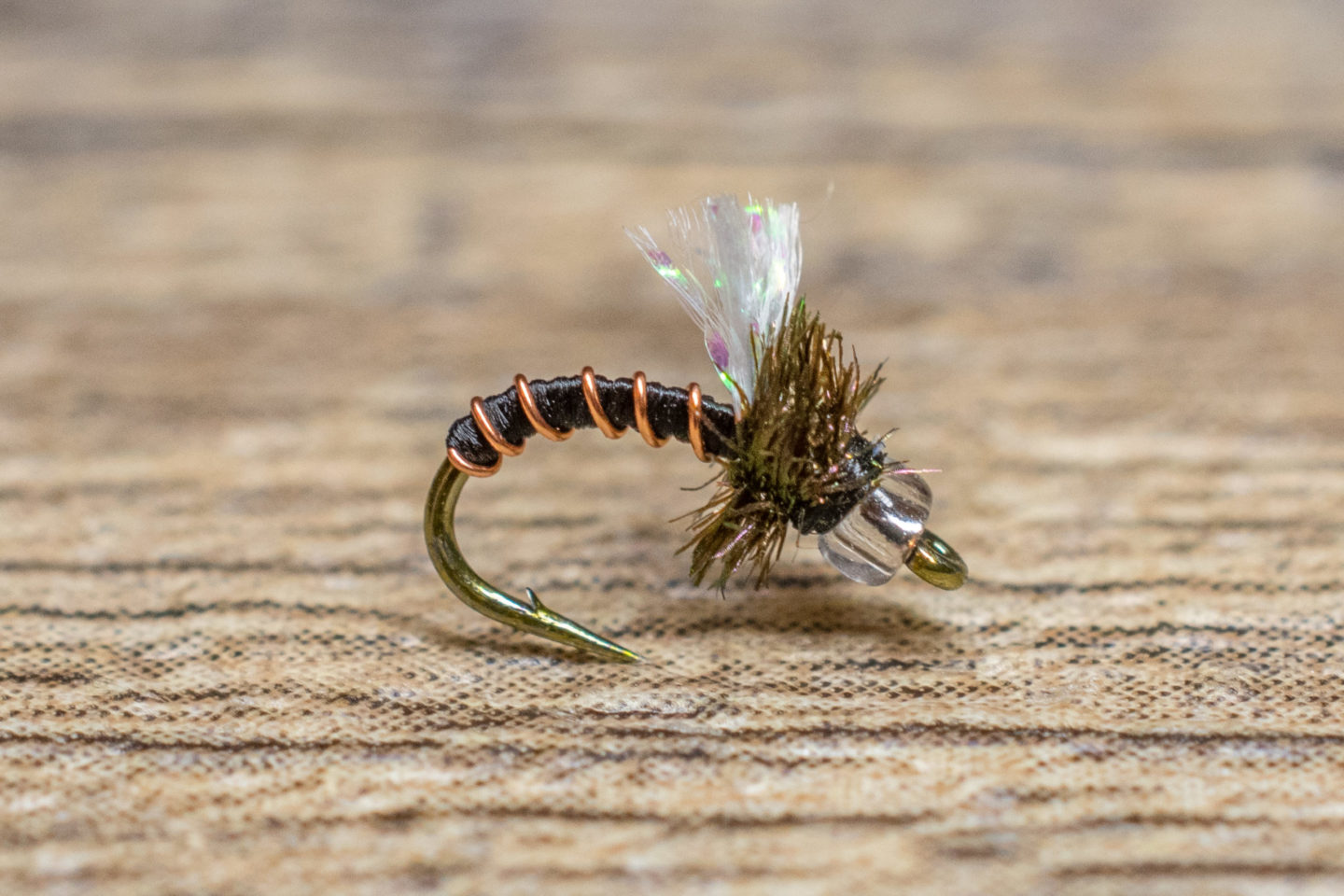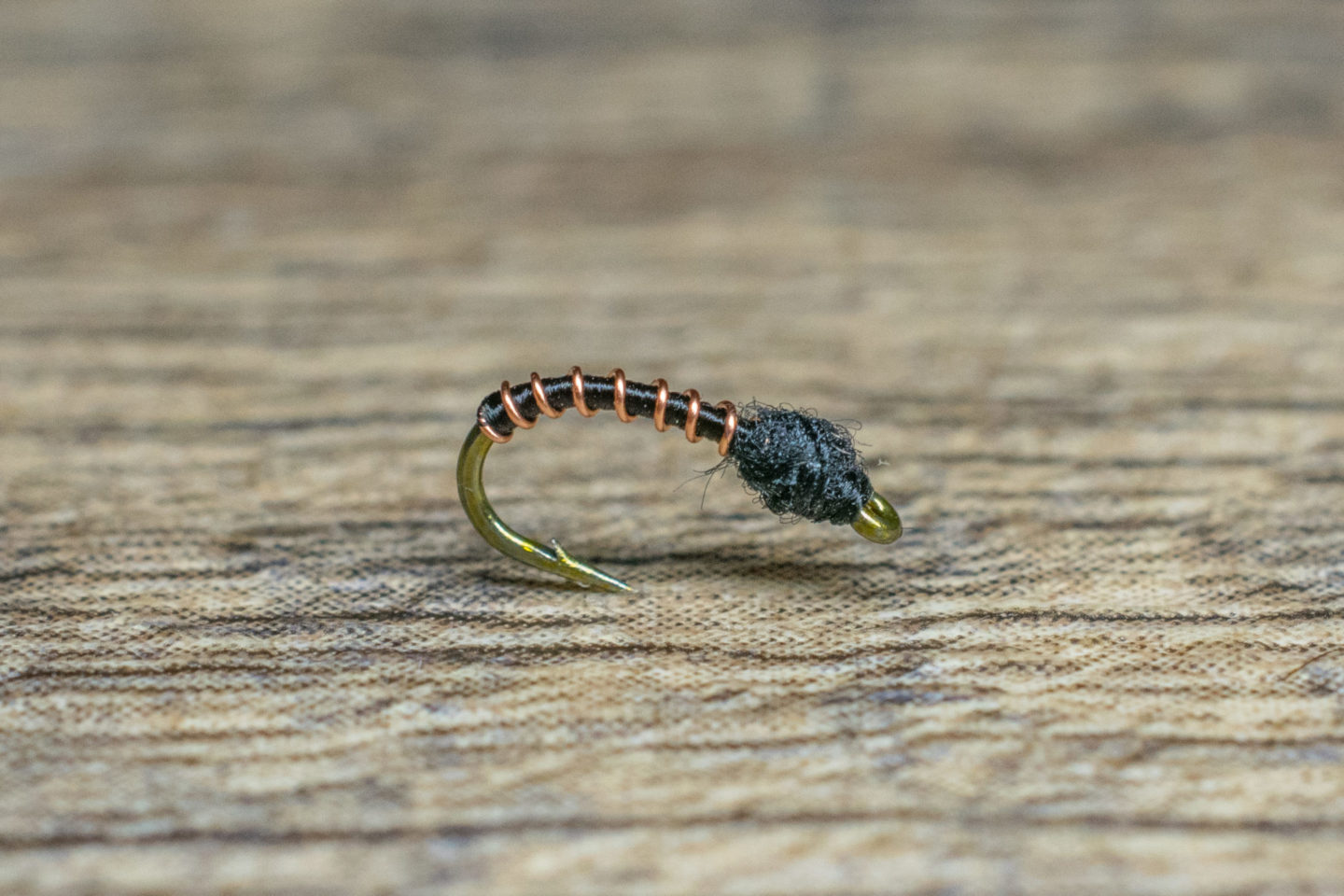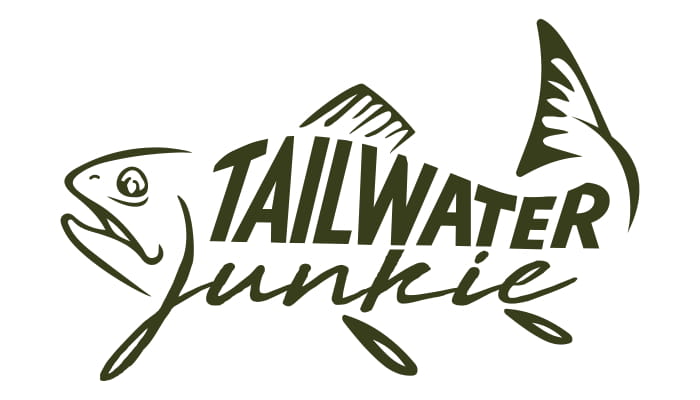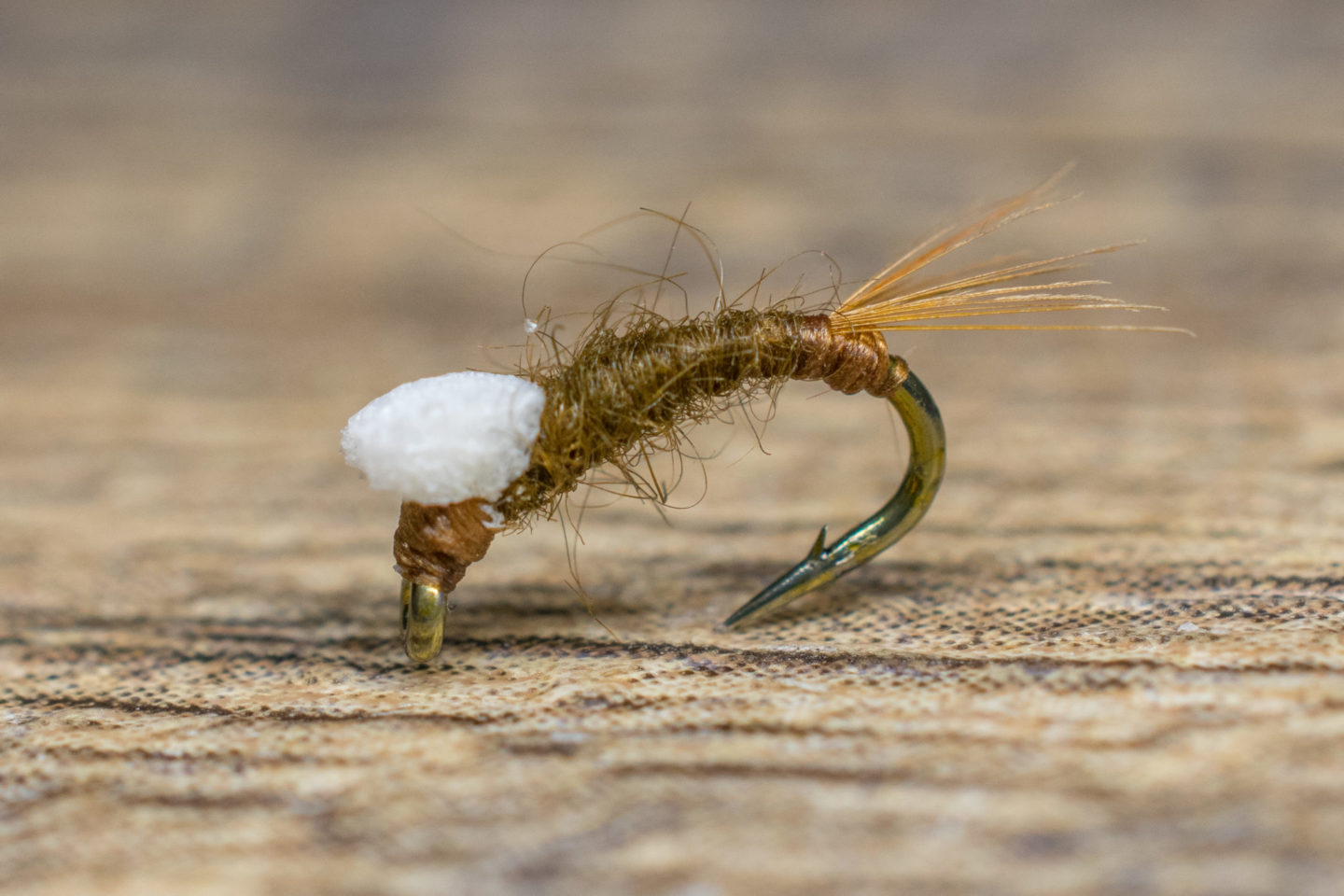It is now fall, time to go small.
As fall approaches, it’s time to switch up your fishing strategy for the shoulder season. Typically around this time of year, you find many anglers fishing more baetis nymphs and midges than they did in the summer. Most importantly, they are starting to downsize their flies. Below are our three must-have patterns for the fall. We have included backgrounds for each pattern as well as their unique fishing strategy!
Foam Wing Emerger
The Foam Wing Emerger in sizes 20-24 is must-have for fall fly fishing as it is an excellent imitation for emerging blue-winged olives and Tricos. It may be the ultimate guide fly because it is quick and easy to tie, durable, and fools some of the toughest trout you’ll find on tailwaters.
The Foam Wing Emerger fishes well under a wide range of conditions, but it remains most effective during the peak of a Blue-Winged Olive hatch. This pattern is especially effective on the swing when trout are keying on swimming Baetis nymphs. We recommend smaller sizes in the fall with a good starting point being sizes 20-24. In smaller sizes, this pattern can overlap as both a baetis nymph or midge imitation. I believe this is one of the reasons why this pattern is so productive.
Manhattan Midge
The Manhattan Midge was one of the first patterns I developed to fool selective Rocky Mountain trout. Since then, it has become an Umpqua Feather Merchants pattern and one of the most popular midge patterns around. The Manhattan Midge is a souped-up hybrid of the Top Secret Midge, Mercury Black Beauty, and Mercury Blood Midge that incorporates the best attributes of each pattern. It has a slim profile, segmented body, a flashy wing, peacock collar that breathes life, and a clear silver-lined bead to imitate trapped air in the thorax.

Fall midge feeders eat this fly with confidence. Although we have found success with the Manhattan Midge year round, it remains especially effective from late August through the beginning of April. In fall, we suggest you fish the Manhattan Midge in sizes 20-22. As strange as it might sound a Black Manhattan Midge can also double as a drowned Trico in many watersheds during the fall.
Black Beauty
The original Black Beauty was invented over two decades ago to imitate the heavy concentrations of midge pupae found in tailwaters below deep, bottom-release reservoirs. Don’t let the simplicity of this pattern fool you like it has consistently fooled selective trout all over the United States. While the original pattern performs extremely well, adding a clear, silver-lined glass bead and some Mylar tinsel (Flashback Mercury Black Beauty) increases the natural translucency of this emerging pupa.

The Black Beauty and its variations is one of our top producing patterns from September to early spring when you will see most trout primarily feeding on midges. In the initial stages of a midge hatch, we tend to fish a Black beauty off an attractor (i.e. egg pattern) to draw attention to the small fly below. As the hatch intensifies try dropping a Black Beauty off another pupae (Top Secret Midge, Manhattan Midge, etc.). Observation is key when trying to match the hatch – make sure you look at the size of the adults and match the pupa accordingly. If you only have one size of the Black Beauty in your box this fall, make sure it’s a size 22.


Forrest,
I’m excited to discover your site. Great presentation and information. I’m a newby (5 years) in the fly fishing world and really enjoy the challenges of the South Platte. It’s great that you share fishing strategies for each bug so there is a method to implement. Keep up the good work. I’m spreading the gospel of fly fishing to my friends and will share your site with them.
Thanks John! Tight lines!